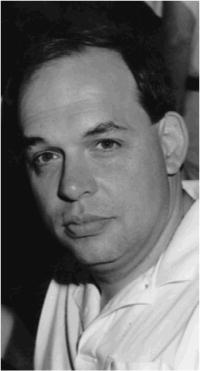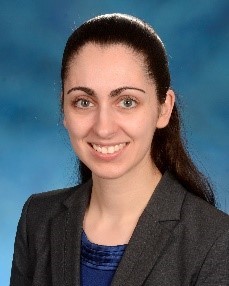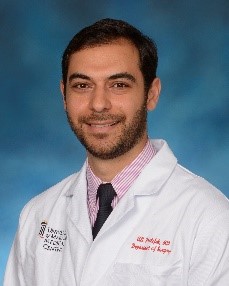Vol. 1 Issue 1
Please select a topic or scroll down the page:
Letter from Chair | The Story Behind the Dissector | Graduating Chief Residents | Research Spotlight | Clinical Spotlight | Culture/Diversity | Welcome New Faculty | Grants | Six Degrees of Surgery | Archive
Letter from the Chair

I would like to welcome everyone to the first edition of the Department of Surgery’s newsletter, the Maryland Dissector. We asked the finishing chief residents to help name this newsletter and they chose wisely, incorporating some of the rich and innovative histories of our surgical program.
It has been an unusual time to assume the lead of a major academic Department of Surgery given the COVID pandemic, but with chaos comes opportunity. Our chief residents finished this year under unprecedented conditions, and we are immensely proud of how they retooled to help on the frontlines (attach link to the video).
We often speak about grit and perseverance and clearly, the entire Department has shown these qualities, standing strong together, continuing to care for our surgical patients and advance the academic missions despite these challenging times. This spring we have also witnessed protesting in our country with a renewed push for social equity for all Americans. We as a Department are committed to a culture of inclusivity and diversity.
Despite these uncertain times, there remains good news to share. We are increasing our focus on research and clinical growth. Over the past six months, we have welcomed 16 new remarkably talented clinical and research faculty. We have brought in a new group of transplant immunologists working together to find cures for organ rejection. As a Department, we remain committed to research, clinical care, national leadership and engagement.
In the last year, we have encountered many adversities coupled with many successes and accomplishments. I am inspired by how we have come together to maintain patient care and reinvent our way of doing things during this pandemic. Members of our Department have worked tirelessly to convert ambulatory visits to telehealth appointments and establish protocols to maintain the safety of our patients and team members in order to provide the care our patients need. Through the hard work of Dr. Kimberly Lumpkins and others, we have been able to transition to virtual Grand Rounds and M&M meetings, and they have been remarkably well attended. As we welcome a new class of residents, I want to say congratulations to the graduating class and thank you for shining bright on the front lines during this challenging time.
As we begin the new academic year, we enter a time of re-engagement and excitement as the new medical students and interns come in and new chief residents rise into their roles. My vision is for the University of Maryland Department of Surgery to continue to be the premier surgical program where patients want to receive their care and surgeons want to spend their careers. Focusing on the mission of academics, clinical volume, research and teaching, I am excited to see the new heights the University of Maryland Department of Surgery will reach.
Best wishes,
Christine Lau, MD, MBA
The Story Behind the Maryland Dissector

The newsletter name, the Maryland Dissector, was inspired by a tool used throughout the country and invented right here at the University of Maryland. Jack Flowers, MD, surgery resident, fellow, and associate professor of Surgery at UMSOM from 1984 to 2002 shares the inside story of the dissector and early laparoscopic cases. Currently, Dr. Flowers is the Chief of Surgery at Greater Baltimore Medical Center.

Jack Flowers
Chief of Surgery
Greater Baltimore Medical Center
Q: How did the Maryland Dissector come into being?
A: Karl Zucker, MD invented the Maryland dissector. At the time, we were using the GYN pelviscopy set (the only laparoscopy instruments in existence) which had only a rounded tip (dolphin nose) blunt dissector, and no curved instruments whatsoever. It quickly became clear that you couldn’t easily dissect around the cystic duct without a hemostat-like instrument, so he pushed Aesculap, Inc. to develop a curved-tip dissector.
Karl worked at both the VA and UMMC, but primarily UMMC — he had just started the Surgical Endoscopy and Laparoscopy fellowship, and I was the first fellow. The Maryland dissector and the disposable clip applier were the two instruments that allowed the explosion of laparoscopic cholecystectomy.
Before that, US Surgical had about 20 reusable clip applier handles that they used to FedEx around the country so that early adopters could do cases. Karl Storz SE & CO. only had one or two sets of cameras/high flow insufflators in Baltimore and there was a fierce competition over who got access to the equipment.
My recollection is that Karl did sell the idea for the disposable curved tip dissector to US Surgical, but the usual deal is that in exchange for a cash payment you gave up the patent rights. This was before we surgeons were very savvy about intellectual property —we just wanted the instruments made so we could get cases done. The patent was issued to Boston Scientific Corporation in 1990.

The late Karl Zucker, MD
Associate Professor of Surgery
at UMSOM from 1984 to 2002
Q: What is the story behind the name?
A: Karl’s idea was to push the name of “Maryland Dissector” to increase the visibility/prestige of UMMS in the field of laparoscopy. For the same reason, he changed the name of the fellowship from Surgical Endoscopy to Surgical Endoscopy and Laparoscopy. He was very adamant about calling it that and would correct anyone who tried to call it a “laparoscopic hemostat” or curved dissector. I was very surprised how rapidly and widely the name was adopted; it still is to this day.
Q: Can you tell us about the first laparoscopic gall bladder at Maryland in November 1989?
A: Karl had been here for a year or so and Rob Bailey, MD had just joined the faculty after his training in New York. I happened to be chief resident on the GI Surgery service when Karl got back from a conference in France where he heard about Jacques Perrisat, MD doing the procedure. He then went and watched Eddie Joe Reddick, MD do the procedure in Nashville-Eddie and Bill Saye, MD in Atlanta were the only guys in the US doing the procedure at the time. Eddie used to do all the cases with a laser but we quickly saw that would have no long-term traction and moved to start developing instruments.
When Karl got back from Tennessee, he announced to Rob and I that we were going to start taking out gallbladders with a laparoscope. We both told him he was crazy. We went to the IRB and got approval to do a feasibility study on 10 pigs. Karl wanted to be the first teaching hospital in the country to do the procedure and he was not very patient, so we did the first human patient after only three pigs…the rest is history.
Graduating Chief Residents
Congratulations to finishing Chief Residents!


Arielle Cimeno, MD
Hometown: Boston, MA
Undergrad: Boston College – Biochemistry
Medical School: New York University School of Medicine
Fellowship: Emory University School of Medicine-Abdominal Transplant Surgery Fellowship
Hobbies & Interests: Ballet & Theater

Charles Drucker, MD
Hometown: Los Angeles, CA
Undergrad: Yale University-History of Science and History of Medicine
Medical School: University of Maryland School of Medicine
Fellowship: University of Maryland-Vascular Surgery Fellowship
Hobbies & Interests: Letterpress printing, photography, bioethics, international affairs, literature

Bryce Haac, MD
Hometown: Durham, NC
Undergrad: Harvard University-Neurobiology
Medical School: University of North Carolina at Chapel Hill
Fellowship: St. Luke’s -Roosevelt in NYC-Colorectal Surgery
Hobbies & Interests: dancing, travel, speaking Spanish, swimming, triathlons, scuba diving, hiking, rock climbing, biking, and other outdoor adventure sports

Ali Khalifeh, MD
Hometown: Beirut, Lebanon
Undergrad: American University of Beirut-Biological Science
Medical School: University of Balamand
Fellowship: Mayo University-Rochester-Vascular Surgery Fellowship
Hobbies & Interests: Athletic, played collegiate soccer, founder and former president of “international college”, Alumni club at the American University of Beirut, Secretary of Lebanese Mission Club at AUB

Christopher Laird, MD
Hometown: Red Bank, NJ
Undergrad: Johns Hopkins University-Biomedical Engineering and Mathematics
Medical School: University of Maryland School of Medicine
Fellowship: Pediatric Critical Care-Medical College of Wisconsin
Hobbies & Interests: Sailing (ASA Keelboat and Coastal Cruising certification), student pilot, the outdoors (hiking, mountain biking, kayaking, rock climbing, scuba diving (PADI Open water diver), gardening and cooking healthy food on a student budget.

Natalie O’Neill, MD
Hometown: Janesville, WI
Undergrad: University of Minnesota-Twin Cities – Biochemistry
Medical School: University of Wisconsin
Fellowship-University of Alabama-Pediatric Surgery
Hobbies & Interests: Painting (oil), photography (digital), ceramics, yoga (Bikram), travel, and reading novels
Research Spotlight
Persistence Pays off for Joseph Friedberg, MD and His Third Lung Research

Joseph Friedberg
Charles Reid Edwards Professor of Surgery
Head, Division of Thoracic Surgery
Lung failure in patients from the COVID-19 virus helped reignite Dr. Joseph Friedberg’s, Third Lung research.
“Given the COVID pandemic, the consideration of utilizing the abdomen as a ‘third lung’ could provide a significant clinical benefit,” said Joseph Friedberg, MD, Charles Reid Edwards Professor of Surgery and Thoracic Surgeon-in-Chief at the University of Maryland Medical Center.
Dr. Friedberg is a prolific inventor with multiple patents and first had the idea for the third lung in 1989 after seeing the movie, The Abyss. The movie features perlouorocarbons being used for liquid ventilation. Perfluorocarbons are a class of inert compounds, with solid forms like Teflon and GoreTex, but the liquids have an amazing gas dissolving property.
“I’d never heard of perfluorocarbons,” he explained, “but I was a resident on the transplant services at the time and it occurred to me that perfluorocarbons might allow us to use the abdominal cavity ‘like a lung’ analogous to the way it is used ‘like a kidney’ with peritoneal dialysis.”
Dr. Friedberg was able to conduct experiments and was successful.
“We were able to prove and publish that, yes, you really could get meaningful levels of oxygen into the blood stream by running oxygenated perfluorocarbon through the abdominal cavity” he said.
His plan to pursue the project toward clinical trials was put on hold and ultimately tabled when perfluorocarbons disappeared from the market.
“When COVID-19 hit and I saw what was going on, I just planted myself in front of the computer and kept going until I found a perflouorocarbon source, a company in Texas. I cold-called the Chief Science Officer and, after several discussions, they kindly offered to provide us with a perfluorocarbon that they already have in bulk and could produce more to sustain clinical use.”
After making additional calls, Dr. Friedberg connected with Hosam Fathy, PhD, a mechanical engineer at University of Maryland, College Park.
“This was at the time with COVID when there was discussion of ventilator rationing” Dr. Friedberg explained, “within a day, Hosam assembled the most incredible team of engineers who volunteered their time, energy, and commitment to this project without hesitation.”
Currently, the perfusion circuit is in prototype with plans for the first set of experiments. Dr. Friedberg and his team have obtained funding from UM Ventures and the National Science Foundation to pursue this project. As they wait to hear about another grant submitted, there are also plans to submit another DOD and NH grant in the next several weeks.
“For the past two months, this has been all-consuming and we all continue to work on this at full throttle,” Dr. Friedberg said. “If in the end this doesn’t save lives, the only thing I can promise you is that it won’t be for lack of trying.”
Clinical Spotlight
ECMO Saves Hundreds of Lives During COVID Pandemic

David Kaczorowski
Associate Professor of Surgery
Extracorporeal membrane oxygenation (ECMO) has significantly impacted patient outcomes during the COVID-19 pandemic.
David Kaczorowski, MD, Associate Professor of Surgery, specializing in Heart and Lung Transplant and Cardiac Surgery at the University of Maryland Medical Center, describes ECMO as a method used to provide cardiac and respiratory support to critically ill patients using a machine that essentially replaces the functions of the heart and lungs.
“Patients are connected to the machine through large cannulas inserted in blood vessels. Blood is pumped from the patient’s body to an oxygenator. The oxygenator removes carbon dioxide and adds oxygen back to the blood and is then pumped back into the body, thus taking on the patient’s heart and lung functions,” Dr. Kaczorowski said.
The blood bypasses the heart and lungs, giving the organs the support needed to recover.
“Since its debut in 1972, there have been many dramatic improvements to the cannulas, pumps and oxygenators that has led to a much broader implementation of ECMO,” he said.
In 2009, ECMO proved to be beneficial during the H1N1 pandemic in patients with respiratory failure due to acute viral disease. Dr. Kaczorowski and his team were hoping to have the same effect on COVID-19 patients.
“At UMMC there were 39 patients cannulated with respiratory failure and during the COVID crisis. Of those patients, 16 have successfully been decannulated and nine of the patients were discharged,” Dr. Kaczorowski said. “There are still 14 patients being supported by ECMO in the hospital.”
He believes ECMO can be very effective in patients with refractory respiratory failure that is refractory to conventional measures.
“This requires an intense team effort and collaboration for successful outcomes; COVID has confirmed you need to have a dedicated team,” said Dr. Kaczorowski. “Caring for COVID patients using ECMO has been challenging due to patients' dysregulated coagulation and because of this, the ECMO team had to change their anticoagulation protocol specifically for these patients.”
Through the years ECMO has evolved and Dr. Kaczorowski said it will continue to evolve.
“With COVID supportive platform, ECMO provides gas exchange, but it doesn’t result in healing of the lungs. Research is required in things that will allow us to combat the virus and better anti-virals to help promote lung healing,” said Dr. Kaczorowski “We are currently investigating stem cells and other therapies for COVID to find better ways of promoting lung healing.“
The ECMO program has seen explosive growth at UMMC. Dr. Kaczorowski said they treat around 200 patients a year. Patients on ECMO are not just COVID patients, they are patients with lung conditions, heart conditions, and trauma. Dr. Kaczorowski closed by saying “These critically ill patients would not have survived if it were not for ECMO; it has saved hundreds of lives.”
Welcome New Faculty
Alexander Krupnick, MD
Vice Chief, Division of Thoracic Surgery;
Director, Lung Transplant Program
Siamak Dahi, MD
Visiting Instructor, Division of Cardiac Surgery
Raphael Meier, MD, PhD
Assistant Professor, Division of Transplant Surgery
Dan Maluf, MD
Director, Program in Transplantation, Division of Transplant Surgery
Swati Chaparala, MD
Assistant Professor, Division of Vascular Surgery
Rebecca Brown, MD
Assistant Professor, Division of General and Oncologic Surgery
Valeria Mas, PhD
Chair, Surgical Science, Division of Surgical Science
Grants
UM Ventures – Dr. Joseph Friedberg - $50,000 – “Utilizing the Abdominal Cavity as a Supplemental Lung”
NSF – Dr. Joseph Friedberg –$150,000 “Collaborative Research: EAGER: Experimental Identification of the Dynamic of Swine Carbon Dioxide Removal via Peritoneal Perfluorocarbon Circulations”
NIH – Dr. Nariman Balenga - $68,000 – Administrative Supplement for equipment “Mechanism of Activation, Signaling and Trafficking of Adhesion GPCRs CPR64 and GPR56”
NIH – Dr. Bartley Griffith/Dr. Jon Wu - $758,334 “Enhancement of an Artificial Lung for Ambulatory Respirator Support: – competitive renewal
NIH – Icahn School of Medicine at Mt. Sinai – Dr. Sunjay Kaushal - $120,000 – “Mesenchymal Stem Cells for the Treatment of Moderate to Severe COVID-19 Acute Respiratory Distress Syndrome”
NIH - Dr. Jonathan Bromberg - $463,500 – “Lymph Node Structure and Function in Tolerance: Role of Laminins” – competitive renewal
NIH – Dr. Christine Lau - $870,551 – “Prevention of Lung Transplant Injury with Adenosine 2A Receptor Agonist” – grant transfer
Six Degrees of Surgery
By Stephen Kavic, MD


